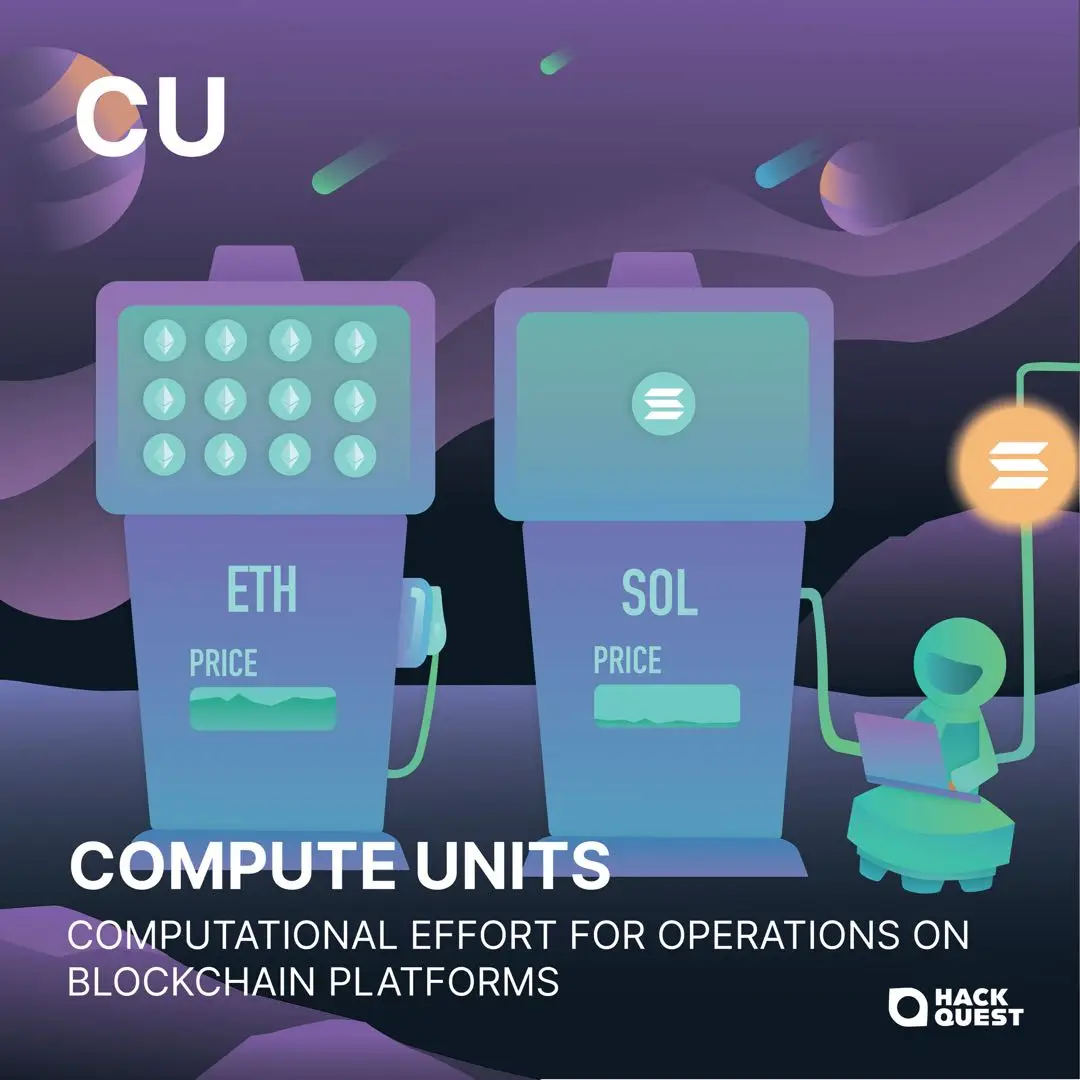Back
Compute Units
Solana
By HackQuest
Apr 9,20243 min readWelcome to the world of Web3, where cryptocurrencies, blockchain, and a unique culture converge. Entering the world of Web3 can be both thrilling and overwhelming, especially when faced with the seemingly cryptic language used by enthusiasts. Don't worry if you feel they sound like some secret codes, we are here to unravel their meaning. In this article, we are going to introduce [Compute Units].

What is the meaning of Compute Units?
At its core, a compute unit is a measure of computational effort or capacity required to execute operations on a blockchain network. Think of it as a unit of account for the amount of work a computer must do to complete a task, similar to how kilowatt-hours measure energy consumption. In Web3, compute units help standardize the computation costs of running dApps or smart contracts, ensuring that these operations can run smoothly across different blockchain environments.
The Backstory and Evolution
The concept of compute units emerged as a response to the challenges of scalability and interoperability faced by early blockchain platforms. Initially, blockchain networks like Bitcoin focused on simple transactional capabilities, but as the technology evolved, the need for more complex computations arose, particularly with the advent of Ethereum and smart contracts.
Ethereum introduced the concept of “gas” as a way to measure and limit the computational work of executing smart contracts, preventing spam and ensuring the network’s security. However, as more blockchain platforms with varying capabilities and performance levels emerged, the need for a more standardized way to measure computational efforts became apparent, leading to the development of the compute unit concept in Web3.
Why are Compute Units Important?
Compute units play a crucial role in the Web3 ecosystem for several reasons:
Fair Pricing
They ensure that users pay a fair price for the computational resources they consume. By measuring the complexity of operations in compute units, blockchain networks can charge users accurately, based on the actual computational effort required.
Resource Allocation
They help blockchain networks manage their computational resources more effectively. By limiting the amount of compute units a smart contract or dApp can consume, networks can prevent individual operations from monopolizing resources, leading to a more stable and predictable environment.
Cross-Platform Compatibility
Compute units facilitate interoperability among different blockchain platforms. By standardizing how computational efforts are measured, dApps and smart contracts can be more easily adapted and executed across various networks, enhancing the overall connectivity and efficiency of the Web3 ecosystem.
Examples in Practice
To illustrate the concept of compute units, consider a smart contract on a blockchain platform designed to execute a simple financial transaction, such as transferring cryptocurrency from one account to another. The computational effort required to validate and record this transaction is quantified in compute units. This measurement considers the steps involved, such as verifying the transaction details, updating the blockchain ledger, and ensuring network security.
Another example could be a more complex dApp that executes various operations, including data storage, retrieval, and complex calculations. The compute units for this dApp would be higher, reflecting the increased computational work needed to support its functionality.
Conclusion
Compute units represent a fundamental concept in the Web3 world, providing a standardized measure for the computational effort required by dApps and smart contracts on blockchain networks. By understanding compute units, beginners can gain insights into how blockchain platforms manage resources, charge for services, and ensure the efficient execution of decentralized applications. As you delve deeper into the world of Web3 and blockchain, keep the concept of compute units in mind—it’s a key piece of the puzzle in understanding how this innovative technology operates and evolves.